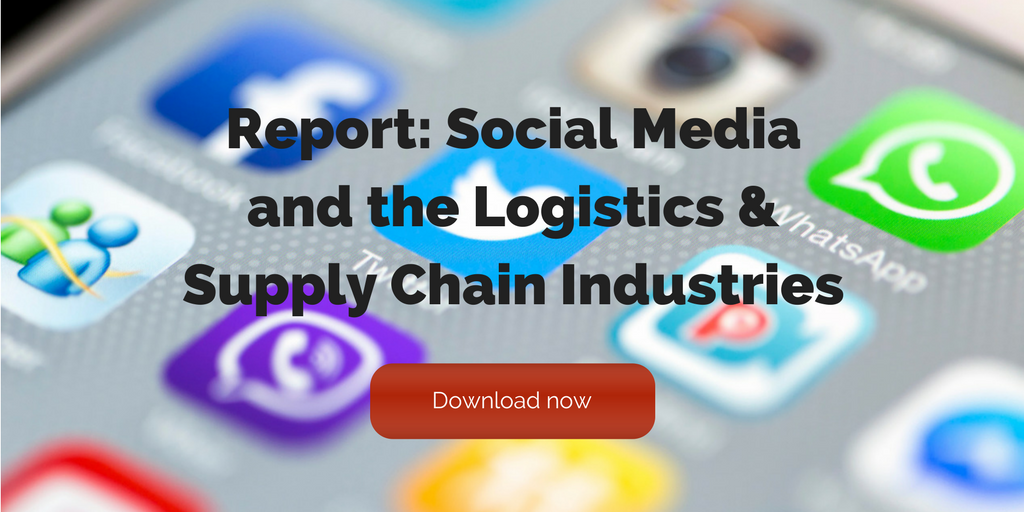
by Fronetics | Sep 20, 2016 | Blog, Content Marketing, Logistics, Manufacturing & Distribution, Marketing, Strategy, Supply Chain, Warehousing & Materials Handling
A content marketing strategy helped one organization generate leads, increase web traffic, and drive sales and new business.
Why would my company blog? Do we really need to be on social media? What is a white paper, and who would read one that I wrote?
These are questions that many businesses in the manufacturing and warehousing space might ask. They don’t see or understand how they might benefit from content marketing.
TotalTrax might have asked the same sorts of questions several years ago. The company, which provides tracking technologies for manufacturing and warehouse operations, had experienced positive year-over-year growth for a decade. The website got decent traffic. Yet, there was a sense that there were many untapped opportunities for growth.
TotalTrax hired Fronetics Strategic Advisors to create and implement a content marketing plan to maximize the company’s digital presence. TotalTrax wanted to see results in the form of increased web traffic, new and better leads, and revenue. Fast forward 24 months, and that’s exactly what happened.
Content helped TotalTrax to achieve:
- 19% increase in overall web traffic
- 500% increase in traffic from social media
- 244 high-quality leads
- 30% net increase in new customers
- 10% growth in sales revenue
To learn more about how Fronetics helped TotalTrax maximize results from a digital and content marketing program, download our case study below.

Related posts:

by Fronetics | Sep 19, 2016 | Blog, Content Marketing, Marketing, Social Media
Twitter is changing its rules on the 140-character limit for your tweets.
In May, Twitter announced that it planned to make changes to the types of content that count toward the platform’s 140-character limit. The social network provided no firm timeline as to when the changes would take place, but The Verge reports that September 19th is the big day.
What are the changes? And what do they mean to you?
Media attachments including photos, GIFs, videos, polls, and Quote Tweets will no longer count toward your 140-character limit. Also no longer counting toward the character limit: @names in replies.
Other changes:
- The ability to retweet and quote yourself so that you can share new insight on one of your Tweets, or share it again if you feel like it went unnoticed.
- Tweets that begin with a username will reach all your followers. This means that you will no longer need to use the awkward ”.@” convention.
Together these changes mean that you will have more flexibility in communicating via Twitter.
It isn’t clear if all the announced changes will occur simultaneously, or if they will be rolled out separately.
Related posts:


by Fronetics | Sep 15, 2016 | Blog, Content Marketing, Marketing, Strategy, Talent
Content marketing is significantly more effective when a designated leader is driving your strategy.
Who is leading your content marketing strategy? If you don’t have an immediate answer, your content marketing program probably will not be as effective as it could be.
Research shows that companies who designate someone to drive the execution of their content marketing strategy have greater success than those that do not. So your strategy should account for leadership, specifically naming a person or position that will be in charge of implementation, problem-solving, and measuring results.
Who could take on this role for your business? Here are a few ideas.
An executive
Curata reports that, by 2017, 51% of companies will have an executive in their organization who is directly responsible for an overall content marketing strategy. That’s how important it is to have someone leading your strategy: More than half of organizations will create or designate positions like chief content officer, VP of content, or director of content. If your company is large enough to support this human resource, you’ll likely reap great benefit from your content marketing efforts.
A marketing director
Is there a senior person on your marketing team with experience using content as a marketing tool? Having a marketing director lead your content strategy is a great option for companies who can afford to delegate some of that person’s responsibilities elsewhere to make room for this work. Marketing directors are generally organized and capable of leading a diverse team, and they are used to reporting on KPIs as they relate to marketing efforts.
Whoever produces most of your content
Many smaller or mid-sized companies don’t have large marketing teams, and instead rely on several people to take on content-production responsibilities in addition to their everyday tasks. These are the people who will be most familiar with your company’s content and strategy, and how they align with your business goals. Do any of these people have leadership abilities or experience running a cross-functional team? It could be worth outsourcing some content writing or production in order to allow that person to drive your content marketing strategy.
An advisory firm
Sometimes you don’t have the internal resources or expertise to execute your business’ content marketing on your own. Hiring a firm or professional to create and/or execute your strategy can take enormous pressure off of your employees. They are left to do their jobs, while an experienced team shoulders the burden of planning, producing, and reporting on the progress of your content marketing program. Such a partnership can be very beneficial to companies of all shapes and sizes.
Related posts:


by Fronetics | Sep 13, 2016 | Blog, Content Marketing, Marketing
Considering outsourcing some or all of your content marketing? Check out these statistics.
Companies turn to content marketing to build brand awareness, generate leads, and drive sales. But the constant creation and distribution of original content can drain an organization’s resources. That’s why many choose to outsource all or some of their content marketing efforts to content partners or marketing firms.
If your business is exploring outsourcing as an option, here are some statistics that you might find interesting.
13 stats about outsourcing content marketing
51% of B2B marketers list lack of time/bandwidth to create content as one of their top content marketing challenges, and 50% list producing enough content variety/volume as well. (LinkedIn Technology Marketing Community)
30% of B2B marketers say an external agency/consultant is one of the top resources for content creation for their organizations. (LinkedIn Technology Marketing Community)
The two most outsourced content marketing activities:
- Writing (44%)
- Design (41%)
(LinkedIn Technology Marketing Community)
Marketers are outsourcing 18% of their content, with the remaining content being created in-house, curated or syndicated. (Curata)
Only 25% of marketers don’t outsource any content creation. (LinkedIn Technology Marketing Community)
About two-thirds of marketers outsource less than one-third of their content creation. (LinkedIn Technology Marketing Community)
Business bloggers outsource 14% of their blog posts. The best practitioners outsource 24%. (Curata)
What are the most effective resources for video marketing content creation?
- Combination of outsourced and in-house resources (70%)
- Outsource to a specialist (22%)
- In-house resources only (8%)
(Ascend2 2015 Study)
Related posts:

by Fronetics | Sep 6, 2016 | Blog, Content Marketing, Logistics, Marketing, Strategy, Supply Chain
Your customers use vendor content in their purchasing decisions, and you need a strategy to reach them — or your competitors will.
Content marketing can be a game-changer, in terms of new business and sales revenue, for organizations of all sizes and industries and levels of marketing savvy. But you can’t just set up a blog and a few social media accounts and expect sales numbers to start shooting through the roof.
The truth is, your potential customers consider vendor content in the purchasing process. If you don’t have a data-driven content marketing strategy to attract their business, you’ll lose them to your competitors.
Sometimes, the numbers say it best. Here are 12 content marketing strategy statistics that underscore the importance of developing a clear content marketing strategy to advance your business goals.
12 content marketing strategy statistics
Your customers want content.
95% of B2B buyers are willing to consider vendor-related content as trustworthy. (DemandGen Report – 2016 Content Preferences Survey)
47% of B2B buyers consume 3-5 pieces of content prior to engaging with a salesperson. (DemandGen Report – 2016 Content Preferences Survey)
51% of B2B buyers rely more on content to research and make B2B purchasing decisions than they did a year ago. (DemandGen Report – 2016 Content Preferences Survey)
Type of content buyers have used in the past 12 months to make B2B purchasing decisions:
- White Papers (82%)
- Webinars (78%)
- Case studies (73%)
- eBooks (67%)
- Blog posts (66%)
- Infographics (66%)
- Third-party/Analyst reports (62%)
- Video/Motion graphics (47%)
- Interactive presentations (36%)
(DemandGen Report – 2016 Content Preferences Survey)
It’s important to clearly define your strategy and goals.
Content marketing effectiveness increases with:
- Experience (64% of experienced marketers say they are effective)
- A documented content marketing strategy (48%)
- A documented editorial mission statement (49%)
- Organizational clarity on what content marketing success looks like (55%)
- Daily or weekly content marketing meetings (41%)
(Content Marketing Institute/MarketingProfs)
Only 13% of those who do not document their strategy feel their content marketing is effective. (Content Marketing Institute/MarketingProfs)
Your strategy should clearly define your target audience and their needs.
96% of B2B buyers say content that speaks directly to their company is the single-most influential aspect of a vendor’s website. (Demand Gen 2016 B2B Buyer’s Survey Report)
What makes content most effective?
- Audience relevance (58%)
- Engaging and compelling storytelling (57%)
- Triggers a response/Action (54%)
(LinkedIn Technology Marketing Community)
Your competitors are using content to win over potential customers.
88% of B2B organizations in North America use content marketing. (Content Marketing Institute/MarketingProfs)
75% of marketers are increasing investment in content marketing. (Curata)
79% of logistics and supply chain companies consider content as an effective tool for their business. (Fronetics)
The marketing software market is expected to grow to more than $32.3 billion in 2018. (IDC)
Related posts:

by Fronetics | Aug 31, 2016 | Blog, Content Marketing, Marketing, Strategy
Targeted content can help convince high-level decision-makers and executives to accept your sales meeting request.
There are many benefits to content marketing, but did you know it can help you land that next impossible-to-get sales meeting?
According to expert marketer Stu Heinecke’s new book, How to Get a Meeting with Anyone, top sales professionals use personalized content to target high-level relationships in what he calls “a shadow practice,” which has been extremely effective at reaching critical, hard-to-reach contacts.
In these campaigns, content is targeted to make the connection with the right people — without any obvious pursuit — and secure those hard-to-get meetings. This can be a game-changer for your business.
Heinecke’s book pools the advice of the top 100 sales thought leaders in the world. He recently shared some of his findings with Harvard Business Review.
Here are some key takeaways:
- You can use content marketing to combine marketing and selling, employing specific campaigns to connect with high-level decision-makers and specific C-level executives. Finding a few dozen of the correct high-level relationships can quickly elevate the scale of your business.
- When approaching connections derived from content, Heinecke found that response rates averaged from 60% to 80%, with some campaigns actually hitting 100%.
- The greatest success is associated with content that delivers something of value. Share the personality of your brand, but offer no sales pitch. “Your first mission is simply to create a connection, to establish yourself as someone they’ll want to listen to,” Heinecke states.
- You should offer something more, to be delivered at the meeting. The point is to continue to add value to the relationship. For example, offer to bring relevant research, a white paper, or a free audit of the executive’s business to the first meeting.
- Once face to face, continue to engage in conversation that provides insight to what the contact’s business challenges are. Refrain from a sales pitch, but share examples of other companies with similar challenges, which have benefited from your specific product or solution. Tell a story — similar to what your content marketing does.
Content can help you make important connections — just ask NoWait
The same HBR article also shares the story of the founders of NoWait, a mobile application which allows diners to put their name on the waitlist of a restaurant from a remote location.
With a minuscule budget, the NoWait founders used targeted content as the basis for their entire launch strategy. They sent personalized videos on iPads in custom packaging to the CEOs of the 30 top restaurant chains. Their highly targeted approach allowed the company to focus on the exact people who could do them the most good — the decision-makers of the biggest brands in the industry. The app is already used by more than half of their targeted companies.
Related posts:









